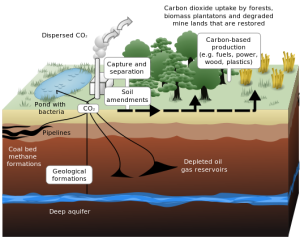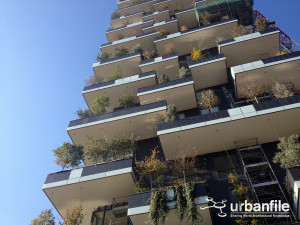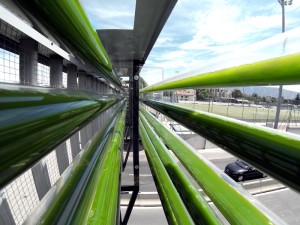In 1964 the Russian astronomer Nikolai Kardashev proposed a scale to measure the level of a civilisation’s technological advancement. A Type I civilisation would use and control all of the natural resources of their home planet. A Type II civilisation has mastery of the power of its star and solar system, and a Type III civilisation harnesses and controls all of the resources available in the galaxy.
By this scale Earth, and humanity, is probably about a Type 0.7. We are using more and more of the resources of this planet, but leaving the natural cycles of elements and minerals unbalanced, and this is causing large, rapid shifts in the climate of our planet. What we need now is the total control of these resources and their environment, a form of climate engineering.
Currently, the opinions of most climate scientists are that we are close to the point of no return, the “tipping point” in regards to the amount of carbon in our atmosphere – but we’re not there yet, and there is time to restrict our emissions and develop technologies to reduce its presence in our atmosphere. Despite some researcher’s claiming that we have already passed this point they may be our best hope for keeping our home liveable.
Bio-energy with carbon capture and storage (BECCS)
One of the most oft-talked about technologies for reducing carbon levels in our atmosphere is BECCS – combining bio-energy (creating energy from biomass) with carbon capture and storage (capturing and then sequestering the atmospheric carbon in deep geological deposits). CCS technologies have already been guaranteed in many planned power plants, as a way to mitigate carbon emissions.

For a long time carbon has been captured at the point of energy creation for a variety of other purposes – where else would the bubbles in your coke come from? However the key part here is storage – turning the carbon into a form which can then be sequestered deep beneath the earth. The economics of this technology, however, hold it back – it costs about 40% more energy to capture around 85% of the emissions. And there is the threat that storing a vast quantity of carbon in an underground fissure would eventually come back to haunt us – whether by a leak, or something more… explosive.
BECCS does have the potential for removal of CO2 from the atmosphere at a scale that, in conjunction with other conventional mitigation options, could deliver pre-industrial CO2 concentrations (Lenton and Vaughan 2009) and compares favourably in economic terms with other potential methods for air capture, such as using sodium hydroxide (Keith, Ha-Duong et al. 2006).
Carbon “scrubbing”
We know that trees pull carbon dioxide from the atmosphere as part of their photosynthetic processes to generate food, so why not just plant more trees?
Well this is certainly an option! Italian architect Stefano Boeri has designed and been building “vertical forests” – integrating trees into the design of high-rise apartments to reduce the net carbon footprint of these homes. We’ll be watching closely over the next few years to see how effective this is in practice.

Urban algae farms are being piloted across a highway in Geneva, both as a source of biofuel and to mitigate the urban emissions.
But with the understanding of how to pull carbon out of the air from nature, why can’t we find a technical solution?
Once again… we already have! Based on the same simple chemistry that allows us to recycle human exhalations in submarines and the International Space Station, Klaus Lackner has been developing a special plastic resin – his “artificial leaves”. This plastic can pull calcium out of water in a water softener – but when impregnated with sodium carbonate it pulls carbon dioxide out of the air, which converts the sodium carbonate to bicarbonate, or as it’s better known – baking soda.

This can then be sequestered as we see with BECCS, however it doesn’t need to be tied to the site of initial emissions and could be located directly above the sequestration site – saving time, money and effort.
Thinking outside the box
Aside from those processes detailed above, there have been many, many strange and wonderful methods proposed to tackle climate change and greenhouse gases. Breeding and feeding cows to promote lower emissions, breaking up atmospheric CFC’s with giant laser arrays (while using 2% of the planets power!), replacing roads and pavements with solar and kinetic panels.
This is how humanity has traditionally dealt with what seemed like insurmountable problems – we throw all of our ideas at a wall and see what sticks (and what’s cost effective!). There may yet be a novel and ingenious method nobody has thought of which could help us mitigate the biggest threat to our existence yet – and really, we should have faith that we will. Disease, war, famine, and natural disasters have all struck us over the centuries and yet the population and knowledge has only increased.
If we can nurse our planet along for a few more centuries, we may well be ready to leave it – and give mother nature a chance to reverse climate change on her own clock.
References
Lenton, T. M. and Vaughan, N. E.: The radiative forcing potential of different climate geoengineering options, Atmos. Chem. Phys., 9, 5539-5561, doi:10.5194/acp-9-5539-2009, 2009.
Keith, D.W., M. Ha-Duong, et al. 2006. Climate strategy with CO2 capture from the air. Climate Change, 74(1-3): 17-45
Comments